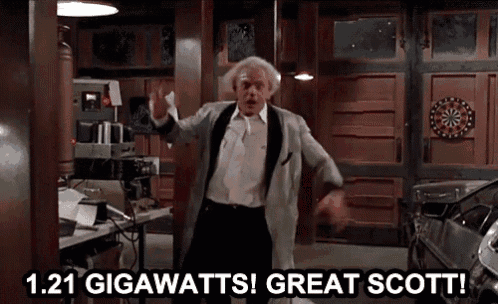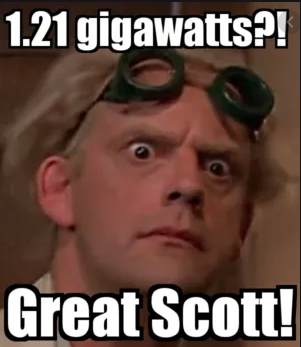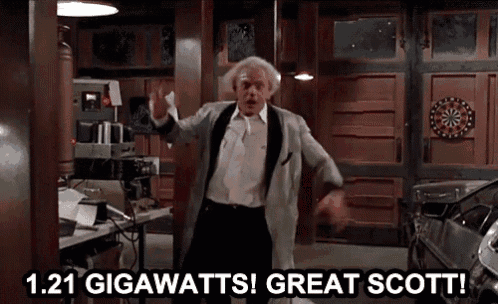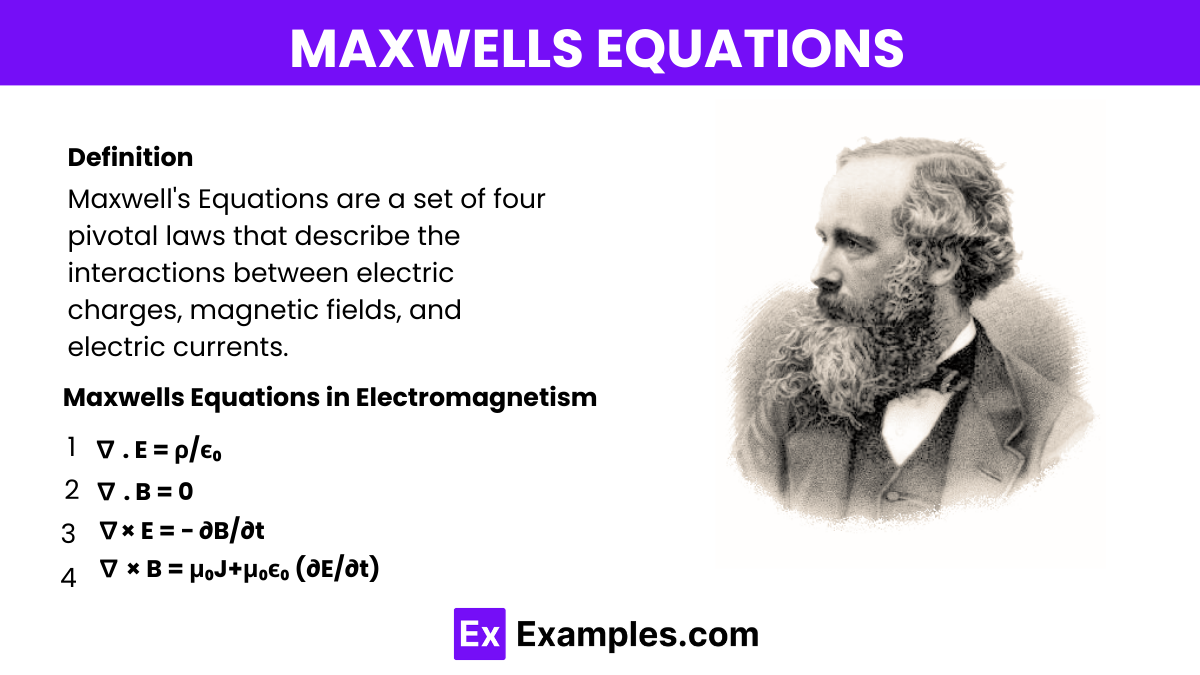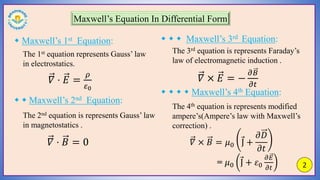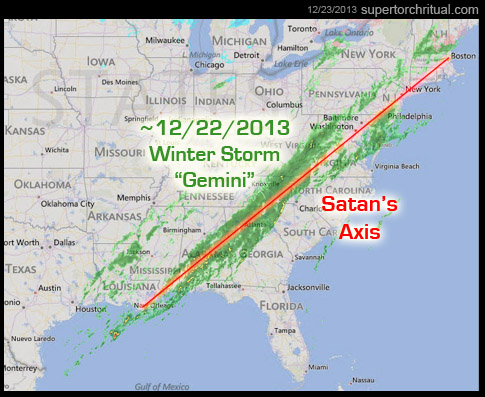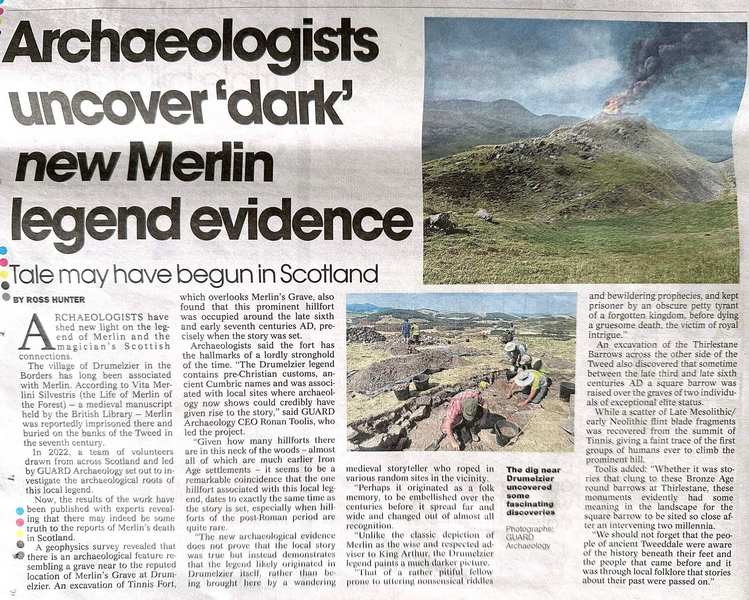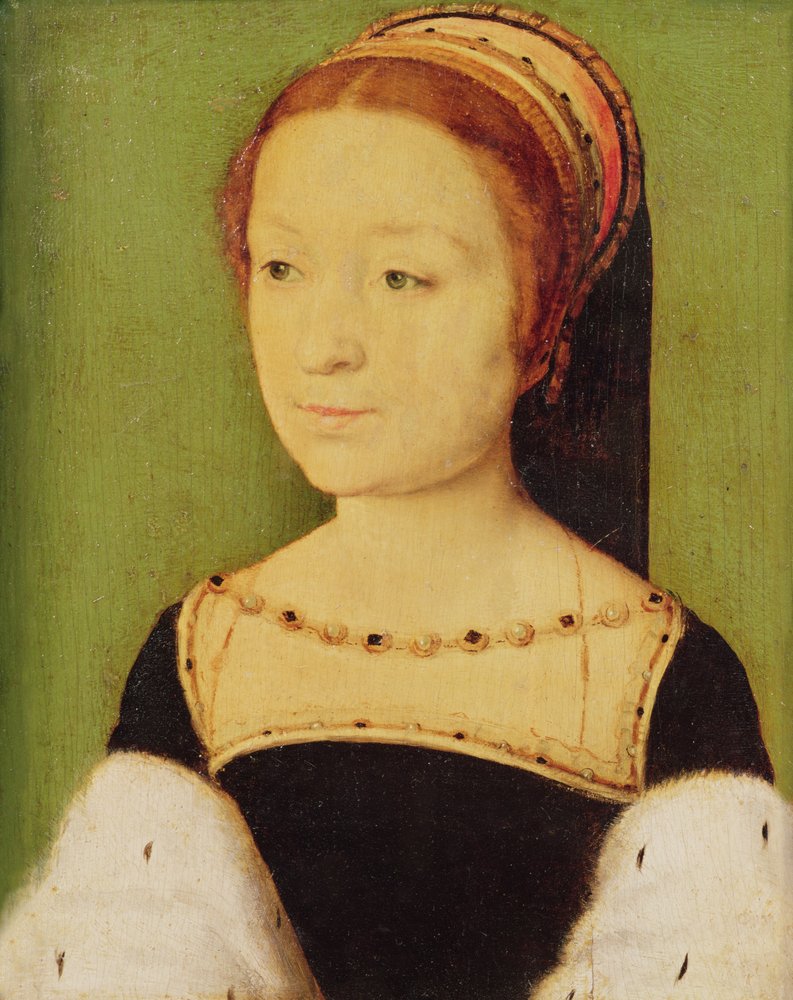|
|
1398 Scot's Discovery of USA
|
 |
| THE WESTFORD KNIGHT/SINCLAIRS
 Ninety years before Christopher Columbus "discovered" America, a Scottish Knight and an Italian Navigator explored North America with a small fleet of 12 ships. The Knight was Prince Henry Sinclair and Nicolo Zeno was the Navigator. A carving on a rock in the centre of Westford, Mass. gives us important evidence of their remarkable exploration of the New World. Ninety years before Christopher Columbus "discovered" America, a Scottish Knight and an Italian Navigator explored North America with a small fleet of 12 ships. The Knight was Prince Henry Sinclair and Nicolo Zeno was the Navigator. A carving on a rock in the centre of Westford, Mass. gives us important evidence of their remarkable exploration of the New World.
Prince Henry's expedition at the time was thought to be insane.The general perception was that the Earth was flat and a fearful journey to the unchartered horizon meant a one way ticket to certain death. No one had ever returned from a journey across the Atlantic Ocean, intense speculation led to the conclusion that there must be a cliff-hanger fall off into the abyss.
Prince Henry's knowledge and ingenious intellectual skills, were greatly assisted by access to archaic maps and documents, found in Jerusalem and taken from the Holy Land to Roslin Castle by his direct relations who served their military missions under the banner of the red cross, esteemed as the Knights Templar.
The family's regard for these prized manuscripts was put into context, when, in 1447, as a ravaging fire overwhelmed the castle, the Prince's Grandson, William Sinclair, now in charge of the Sinclair's heritable property, did not oversee the safe evacuation of the woman and children, no....in his opinion there were more important issues to deal with, his ancestor's three vintage treasure chests were carefully secured and lowered to safety from the burning building.
 This encounter with destiny, was to leave an everlasting impression on William Sinclair. Sir William, the chapel builder, is also the direct ancestor of the First Grand Master Mason of Scotland, also named William St Clair (Sinclair) who had a exulting sense of pride when he inherited the title. An akashic oracular time machine centred on the Sun and the Moon would be built to house the ancient library of knowledge. A modern day Solomon's Temple (itself an anagram of Sol-Sun & Mon-Moon). The source of Modern Freemasonry was to leave some figurative allegories to symbolise deeper moral truths, or spiritual meanings. Bloodlines and the inseparable D.N.A. coil symbol that today is considered conventional to portray the blood-group message, was ascribed by Sir William to pay attention in chapter 13 verse 13 to the knowledge and secrets of the 13th disciple.... Matthew's words,...... This encounter with destiny, was to leave an everlasting impression on William Sinclair. Sir William, the chapel builder, is also the direct ancestor of the First Grand Master Mason of Scotland, also named William St Clair (Sinclair) who had a exulting sense of pride when he inherited the title. An akashic oracular time machine centred on the Sun and the Moon would be built to house the ancient library of knowledge. A modern day Solomon's Temple (itself an anagram of Sol-Sun & Mon-Moon). The source of Modern Freemasonry was to leave some figurative allegories to symbolise deeper moral truths, or spiritual meanings. Bloodlines and the inseparable D.N.A. coil symbol that today is considered conventional to portray the blood-group message, was ascribed by Sir William to pay attention in chapter 13 verse 13 to the knowledge and secrets of the 13th disciple.... Matthew's words,......
"Though seeing, they do not see;
though hearing, they do not hear or understand....."
Matthew's name in Hebrew means "Gift from God". In turn the adept Sir William named Rosslyn Chapel in commemoration and respect to Matthew and it was constituted and christened as the "Collegiate Church of St Matthew". Mathew's veneration, integrity and understanding is clearly brought out in the adrenalated sculptural form of the Master Mason's Pillar. The pillar is also referred to as the "Princes Pillar" in "An Account of the Chapel of Roslin (1778)." On the architrave adjoining the pillar, there is the inscription Forte est vinum fortior est rex fortiores sunt mulieres super omnia vincit veritas: "Wine is strong, a king is stronger, women are stronger still, but TRUTH conquers all" (1 Esdras, chapters 3 & 4)


Prompted by divine influence and inspired by ancient scriptures, William's covenant was to include all aspects of the same in his masterpiece, his roof design is an awe inspiring vaulted, treasure-chest roof-lid that has 215 stars and flowers skilfully sculptured into the ceiling. If we consider the half barrel roof as representational of 1/12 or 2160 years indicating the transition from one zodiacal symbol to the next in the precession of the equinoxes 2160 year period on our orbit round the 25920 years great zodiac precession. First detected by the Greek astronomer Hipparchus in about 130BC from the apparent increase in the observed celestial longitudes of stars. It amounts to about 50″.3 per year. Hence the equinoxes move westwards on the celestial sphere by 1 ° in about 72 years, when we calculate the full circle by multiplying 72 x 360 degrees it = 25920 which in turn takes 25 920 years to complete one circuit.


The great masonic seal, as seen on the dollar, with the all seeing eye on top of the truncated pyramid has 72 blocks which represents the degrees of perceived time, in the great precession of the equinoxes.
The Westford Carving provides one of the sparse bits of evidence of Prince Henry's exploration of America. Other testimony includes the Zeno Maps, the narrative written by Zeno, the Micmac legends, and the unique cannon found in Guysborough Harbour.
Further proof of a North American visit can be found in the stone carvings in Roslin Chapel. Representations of native American maize plants ornament the M curved arches, while other carvings include the healing aloe cactus.
Henry Sinclair was born and raised at Roslin Castle. His father was William Sinclair who died in Lithuania, on crusade with the Teutonic Knights. At the age of 24 Henry became the Earl of Orkney, an earldom which extended throughout the islands of Orkney and included Caithness. Coincidentally Orkney is the most northerly point of the Scottish Roseline. By the time he was 35 he had built a fleet larger than Norway's entire navy. As navigators he was fortunate to obtain the services of Antonio and Nicola Zeno whose father was Admiral Carlo 'The Lion' of Venice, famed for saving that Italian City. Setting out from Orkney with a fleet of 13 vessels and 100 men, they followed Zeno's map across the sea to Newfoundland and Nova Scotia. Theirs was a voyage of exploration and settlement. They weren't conquistadores as were many other explorers. Instead, they were welcomed by the Micmac Native Americans. During a winter season they lived peaceably among the Micmac Indians before Zeno returned to Orkney, while Sinclair explored further southward, along the Massachusetts coastline.

Pictured above is the Micmac River where the fleet sailed in and met the Native Americans.
Seeing smoke rising, a group of the explorers marched inland to Prospect Hill to get a better view. Along the way, Sir James Gunn, Sinclair's lifelong friend, died. In his memory, they carved his effigy in a rock ledge. It consisted of many punched holes, outlining the dead Knight. Archaeological experts have confirmed that the holes were punched 600 years ago! The effigy contains elements known only at that time to Northern Europeans. The sword and the shield trace solely to Prince Henry Sinclair and the Gunn Family.


HISTORY OF THE WESTFORD CARVING
1883
The "History of the Town of Westford" by Rev. R Hodgman, published in 1883, describes the presence of markings on the ledge. It is said the rude outlines of the human face have been traced upon it, and the figure is said to be the work of Indians."
1940
Willaim B Goodwin, an insurance executive who was obsessed with his interest in archaeology, and Malcolm Pearson, photographer, published a description of the carvings.
1950
Frank Glynn, president of the Connecticut Archaeology Society, thought the sword was of viking origin. T.C Lethbridge, curator of the University Museum of Archaeology and Ethnology in England, identified the sword as "a large, hand-and-a-half wheel pommel sword of the fourteenth century type." Further he suggested that the arms armour and heraldic emblems were a kin to the first Sinclair Earl of Orkney.
1974
Frederick J. Pohl, student of pre-columbian exploration and writer, made a thorough study of life and travels of the Earl of Orkney, including the carving. He published his findings in "Prince Henry Sinclair, his Expedition to the new World in 1398."
1970's
Allister MacDougall, the Town Historian of Westford, erected a granite monument beside the carving.
1990
Marianna Lines, under contract of Niven Sinclair, made a cloth rubbing of the Westford Knight Carving which revealed more detail than previously seen.
  
Pictured above is a tribute to The Westford Knight; which can be found in Westford,
THE EPIGRAPHIC TOMB STONE reads
PRINCE HENRY FIRST SINCLAIR OF ORKNEY BORN IN SCOTLAND MADE A VOYAGE OF DISCOVERY TO NORTH AMERICA IN 1398 AFTER WINTERING IN NOVA SCOTIA HE SAILED TO MASSACHUSETTS AND ON AN INLAND EXPEDITION IN 1399 TO PROSPECT HILL TO VIEW THE SURROUNDING COUNTRYSIDE ONE OF THE PARTY DIED. THE PUNCH-HOLE ARMORIAL EFFIGY WHICH ADORNS THIS LEDGE IS A MEMORIAL TO THIS KNIGHT.
Effigy knight below.
|
|
|
|
|
|
James Watt and the sabbath stroll that created the industrial revolution
This article is more than 9 years old
On a spring Sunday in May 250 years ago, the Scottish engineer had a stroke of mechanical inspiration – and changed the world
Fri 29 May 2015 15.48 BST
Two hundred and fifty years ago this month, a young Scottish engineer took a Sunday walk across Glasgow Green – and changed the world. Thanks to the idea dreamed up by James Watt that Sunday in May 1765, human beings became masters of power generation and so transformed our planet.
At the time, Watt was merely fixated with the problems posed by the primitive and inefficient steam engines that were then being used to pump water from mines, and had already made several futile attempts to improve them. Then, on his Sunday walk, the idea for a new device – which he later called the separate condenser – popped into his mind.
It was a notion that would have stunning consequences. The separate condenser changed the steam engine from a crude and inefficient machine into one that became the mainstay of the industrial revolution. Britain was transformed from an agricultural country into a nation of manufacturers.
Today, many scientists believe the processes unleashed by Watt have begun to alter the physical makeup of our planet. After two-and-a-half centuries of spewing out carbon dioxide from plants and factories built in the wake of his condenser’s invention, the atmosphere and crust of the Earth are beginning to be transformed. Watt truly changed the world, it seems.
Indeed, that walk on Glasgow Green remains “one of the best recorded, and most repeated, eureka moments since Archimedes leaped out of his bathtub”, according to William Rosen in his book The Most Powerful Idea in the World: A Story of Steam, Industry and Invention, published in 2010.
In 1765, Watt – then an instrument-maker based at Glasgow University – was working on a Newcomen pump, a state-of-the-art device in which steam pushed a piston through a cylinder. Water was then sprayed into the cylinder, cooling it and causing the steam to condense, creating a vacuum behind the piston that sucked it back into its original position. More steam was pumped in and the piston was pushed forward again.
It was a very powerful process but also a very inefficient one. Constantly heating and then cooling the engine’s huge cylinder required huge amounts of heat and coal. Steam engines like these had only limited usefulness.
Then Watt set off on his walk. When he was halfway across the green, the idea of a separate condenser came into his mind. Such a device would, he realised, create a vacuum that would help suck in the engine’s piston but still allow its main cylinder to operate at a constant temperature. “I had not walked further than the golf-house when the whole thing was arranged in my mind,” he later recalled.
The earliest known portrait of James Watt, painted by Carl Fredrik von Breda in 1792. Photograph: SSPL via Getty Images
Watt would have gone to work straight away but was constrained by the dictates of the Scottish sabbath. He quickly made a model of his device, nevertheless, and this is now displayed in the Science Museum in London. Four years later, he patented the condenser – and triggered the industrial revolution.
“Watt’s condenser tripled the efficiency of the steam engine and that meant that mill or mine owners got three times more mechanical work for every tonne of coal they had to buy,” says Colin McInnes, professor of engineering science at Glasgow University. “It meant that Britain’s coal stocks had been effectively trebled. He made a tremendous difference to the rate at which industry spread through Britain and subsequently the rest of the world.”
Until Watt, human enterprise was constrained by the process of photosynthesis, says McInnes. “In other words, we had to rely on natural living sources for the power we needed to run our factories or plants: fast-flowing water or horses or burning wood. By making the steam efficient, Watt changed all that. He gave us the means to exploit energy-dense fossil fuels in an effective manner. It changed the world and ended the era of renewable energy.”
This point is backed up by Ben Russell, curator of mechanical engineering at the Science Museum, and author of James Watt: Making the World Anew, published last year. “Before Watt, industry had to rely on water power, and there was a strict limit to the number of factories you could build on the banks of fast-flowing rivers,” he says.
“After Watt invented the separate condenser, you could build highly efficient factories almost anywhere you wanted. It made it possible to build plants that were driven by cheap, relatively easy sources: coal and steam. The cotton industry was transformed. So was brewing. And mining. Watt brought wide acceptance of steam as a power source.”
Within a few decades of Watt’s breakthrough, networks of factories and mines, linked by railways, were spreading across the country, triggering a national frenzy for fossil fuels that has since become a global obsession. Steam power no longer dominates global industry but our reliance on fossil fuels such as coal, oil and gas still lingers – with growing impacts on the planet.
Indeed, the Nobel-prizewinning chemist Paul Crutzen now argues that the greenhouse gases produced by burning fossil fuels have brought about such profound changes that we must accept the world has entered a new epoch. He calls it the “anthropocene”.
","alt":"How the condenser works","index":16,"isTracking":false,"isMainMedia":false}" data-island-status="hydrated" style="box-sizing: border-box;">
According to Crutzen and many other scientists, the planet is no longer being shaped primarily by natural processes but by ones set loose by human beings. We are raising levels of carbon dioxide in the atmosphere, scarring the planet’s surface in our search for coal and metals, cutting down forests to make way for factories and homes, and acidifying the oceans. Humans have become planet changers.
As to the event that triggered this onslaught, there are few better candidates than Watt’s stroll across Glasgow Green 250 years ago – though for such a momentous event, it is still afforded remarkably little recognition.
Indeed, it was only relatively recently, in the 1980s, that Glasgow’s councillors decided to install a small boulder in what is Glasgow’s oldest park, with a simple inscription: “Near this spot in 1765, James Watt conceived the idea for the separate condenser for the steam engine.”
By contrast, a few metres away, a 40-metre obelisk dedicated to Horatio Nelson was erected in 1806, only a year after his death at Trafalgar. Thus a remote battle was celebrated with a grandiose monument while an invention that gave birth to the industrial revolution and changed the world had to wait almost two centuries for recognition – in the form of a small stone.
On the other hand, Watt’s striking achievement will be recognised on 5 June, when Glasgow University stages a seminar, The Invention that Changed the World, focusing on Watt and his revolutionary separate condenser, as part of the Glasgow Science Festival.
“Watt was a real product of the enlightenment,” says the seminar’s organiser Lesley Richmond, deputy director of Glasgow University’s archives. “He was self taught, yet went on to work at Glasgow University at a time when Adam Smith and Joseph Black were teaching there.
“He was far more than just the inventor of the separate condenser, though that was the device that was to have the greatest impact. He also invented a machine for copying documents, for example – an early photocopier, in effect.
“And there is so much we can still learn about him. Many of his devices and papers have still to be properly archived and studied. In 2019, we will mark the bicentenary of Watt’s death. By then, we want to have all his work in digital form. Then we will get a real chance to appreciate his fantastic achievements.”
https://www.theguardian.com/technology/2015/may/29/james-watt-sabbath-day-fossil-fuel-revolution-condenser |
|
|
|
|
From The Labyrinth of the Grail by William F. Mann (pp.74-75):
If the inner secrets of Masonry do not lie in Hell where do they lie? Of course, they lie in Heaven. But Heaven needs Hell. Thus, through Craft Masonry the initiate learns that the original columns of the temple were hollow and each supported a globe, one representing a map of the world and the other a map of the heavens. In many ways the "mappamundi" produced in the fourteenth to sixteenth centuries reflects this notion where one ring or circle illustrates what was known of the eastern world at that time and the western circle represents the New World - L'Arcadia. Could mappamundi refer to a world created by the Cathar god of evil - Rex Mundi, "King of the World?"
If true, then it goes a long way to explain why the lands of the New World purportedly fell along what was considered in the sixteenth century to be SATAN'S AXIS, that line beyond what was known of the world at the time. Satan's Axis not only runs lengthwise through Nova Scotia but also extends through Boston, New York, Philadelphia, and along the Allegheny Mountains - all renowned areas of early occult and witchcraft practice.
Beyond coincidence is the fact that the largest manganese and coal deposits within Nova Scotia lie along this so-called Satan's Axis. And there is the evidence presented by Barry Fell in America B.C. that the majority of pre-Columbian relics and remnants found in North America also relate to this axis.
https://www.goroadachi.com/etemenanki/solstice_hellgate.html |
|
|
|
|
HOLY GRAIL IN NOVA SCOTIA: AN INVESTIGATION INTO WHAT YOU’VE NEVER LEARNED IN HISTORY CLASS
By: Andrew Rafuse
Among historians there is a form of professional ignorance that immediately works to discount any new theories, new information which could change our views of modern civilization. This essay will explore one of these issues.
Who was the first European in Nova Scotia? Where was the first settlement? Why were they here? This essay will seek to answer these questions and provide supporting evidence to back up the claims made in this paper.
The Holy Grail is arguably one of the most prized religious items in the world. There has been debate among scholars for centuries as to what exactly the Holy Grail is. The generally accepted theory is that the Grail is the chalice that Christ drank from at the last supper, and the chalice used to collect his blood during the crucifixion. Another theory that has been gaining popularity recently is that the Grail is actually the bloodline of Jesus Christ, his descendants. A Biblical scholar who felt that Mary Magdalene was Christ’s wife first proposed this theory. (Bradley, P. 17)
If we look at the most powerful families in the world we soon see a trend. They are, albeit distantly, related. The Rockafeller family can trace their lineage back to the Steward family. The Stewards can trace their family bloodlines back further to early Romano-Celtic rulers, who could trace their lineage to the “Holy Grail” and through this woman to Joseph of Arimathaea. If we are to believe that the Secret of the Holy Grail is that it was in fact a woman, the next direct descendant of Christ than these families can trace themselves directly back to him through the Grail.
After Christ was crucified the care of the Grail was given to Joseph of Arimathaea; he travelled west to the British Isles, arriving and settling in the area of Glastonbury. Evidence shows that he stayed there for several years. To further Substantiate this claim, in Glastonbury there is a tree, known as the “Glastonbury Thorn” the only known area where this tree grows is in the Middle East, near where Christ was crucified. The Legend of this tree is that when Joseph of Arimathaea arrived in Glastonbury, he stuck his walking staff in the ground. This rooted and became known as the Glastonbury Thorn, which was chopped down in the 1600s by a Puritan fanatic. (Bradley, P. 26)
In looking at the legend of the Holy Grail we cannot ignore role of Arthur in this legend. Evidence will prove that King Arthur did exist, and that there were in fact Knights of the Round Table. When looking at this one must be weary, and sift through the tales of magic and dragons to find the actual truth; this is a somewhat difficult task due to the nature of many of these tales.
What is known about Arthur is that he lived between 470 and 550 CE. A wound received at the Battle of Camlann in 542 left him crippled. After the battle he was taken to Glastonbury (then known as the Island of Avalon) to heal. Exactly how long Arthur lived after Camlann is unknown but some Welsh stories have him living on for a few more years as the crippled Fisher King of or near the Grail Castle.
The title of King was something which Arthur never received; he was however a military commander who was responsible for protecting the border between England and Scotland as well as portions of the English coastline from invasion. It is a myth that Arthur and the Knights of the Round Table were the Guardians of the Holy Grail. It is known that during times of peace in Britain Arthur’s Knights would get bored and restless. As a way to alleviate this boredom Arthur sent his knights on quests to find the Holy Grail. These quests became little more than an excuse for the knights to plunder, rape and pillage. (Boyles, Livingston)
Geoffrey of Monmouth wrote the first known legend written about “King” Arthur. He said the there were only a small number of Knights under Arthur’s command. This may be due in part to a mistranslation of the word “rotunda”. This is a roman word that means roughly, a large round building. Geoffrey may have miss-interpreted this when he was writing his story and thought that it meant a round table. Historical evidence will show that at times there were over 6000 Knights of the “Round Table”. (Bradley, P. 33)
These are the known facts about Arthur, as you can see his actual relevance to the Holy Grail is negligible. He was included in this essay to show his legendary connection to the Grail and to illustrate that his actual contribution was small.
The groups of people known as the Knights Templar may have had the most impact on the legend of the Holy Grail. This order began at the end of the first crusade with the mandate to protect pilgrims on their way from Europe to the holy land. The first Templar knights were poor, relying on alms from travellers to survive. The Order very quickly gained power in Europe as well as in the Holy Land. They changed their mandate slightly to include the protection and in some cases finding of holy relics such as the Shroud of Turin, Arc of the Covenant, and the Holy Grail.
Over the two hundred year life span of the Knights Templar they gained power in Europe on a massive scale, being exempt from all powers save that of the Pope himself. (Who Were the Knights Templar?)
Due to the immense power and wealth held by the Knights Templar they were feared and hated by almost all of the kingdoms of Europe; this would ultimately lead to their downfall. The king of France, Philip IV began making accusations against the Templars. They were subsequently arrested and tortured. Many of the knights confessed, through the use of torture, to things such as trampling and spitting on the cross, homosexuality and acts of sodomy and worshipping of the Baphomet, an alleged false idle (further research would later prove that this was in fact the Shroud of Turin.) (Griffin)
In 1307 the Pope Clement V, issued the Vox In Exelsco. This document officially disbanded the order or the Knights Templar and ordered them all to be arrested and tried for heresy. Shortly after there was another bull issued by the Pope, the Ad Providum, which passed all property and assets controlled by the Knights Templar to their rivals, The Knights of the Hospital (Pope of The Templar Era)
A portion of the Templar fleet set sail for Portugal, where, they simply took on new names. The rest set sail north to Scotland. Where the Scottish independence movement gave them an ideal cover.
At the time the most powerful family in Scotland was the Sinclairs, who’s land provided a perfect hiding place for the fleet of the Knights Templar. The knights established a fortress in Rosslin, Scotland to house their remaining treasures; including the Holy Grail. The Knights Templar would soon be able to repay the kindness of the Scottish people by fighting alongside them at the of Bannockburn and other battles for Scottish independence. (Prince Henry Sinclair)
The Templars lived in Scotland for many years without fear that their secret would be discovered or threatened. This time of comfort came to an end as the English began pushing north back into Scotland. This push made the Templars uneasy and they began to look for a way to move their precious relics out of Scotland. This escape came in the 1390s in the form of a man named Henry Sinclair. Sinclair had employed Antonio and Nicolo Zeno, expert mapmakers and navigators to help him sail west on a voyage of exploration. (Cummings)
Sinclair arrived in what is now Nova Scotia in 1398, he then sailed around the southern tip of the province and to New England. While in Nova Scotia it is thought that Sinclair established at least one settlement. Was this settlement where the new haven for the Knights Templar?
The site of the settlement is in central Nova Scotia, just south of the area known as “The Cross” or the crossroads in New Ross. The ruins were built in a style of architecture known as rubblework, which involved piling pieces of oddly shaped stone together so they lock together in a way and form a wall; after this was done than mortar may have been added. This type of architecture was consistent with fourteenth century Celtic architecture.
One of the mysteries of the site that has baffled scientists and historians for years is the “Holy” well within the walls of the ruined castle. This well has never run dry, even though it is on a hill and even when other wells in the area are completely dry. The New Ross fire department has this well on record as an inexhaustible water supply. Another curiosity about this well is the condition of the water. Deposits of heavy metals in the ground of New Ross causes the water to be very hard and have extremely high counts of heavy metals (ie lead, uranium). The water from this well is completely free of such metals; in fact it has the lowest count of metallic particles in the area.
Small-scale digs on the site reveal several artefacts from fourteenth century Scotland; including a piece of a sword blade, a dagger blade and several farming implements. It should be noted that this has only been placed from this time period by the assessments of historians; there has never actually been any scientific tests on the items to prove their origins.
If we look at the site on a larger scale we begin to see the significance of the area where the castle is located. It is in central Nova Scotia, near two rivers, the Gaspereau and the Gold. These rivers both flow from the same source but once they pass through New Ross they divide, the Gaspereau flows north and empties into the Bay of Fundy, while the Gold river flows south and empties into Mahone Bay. This made finding the site simple, if you knew what you were looking for.
Medieval navigation was less than advanced. It was nearly impossible for navigators to find their position on an east-west plane, however they could determine where they were based on north-south. Because of this the preferred and most efficient form of navigation was to sail directly north or south until you were at the same latitude as the end location and then sail east or west from there. This would often place the navigator within about 200 miles of their desired destination. In the case of Nova Scotia, a completely unpopulated (at least by Europeans) land, there were no towns or ports that could be used as reference for location.
Both Rivers emptied into bays that were on the same latitude, this made it confusing and almost impossible for navigators to distinguish between eh two. The Gold River empties into Mahone bay, near Oak Island; while the Gaspereau River empties into the Bay of Fundy, near and island- Oak Island.
If we look more closely at these islands we start to see some startling similarities; the Gaspereau Oak Island was part of a land reclamation project during the 1930s and is now a peninsula. However, the comparisons are still relevant.
Both islands are at the mouths of the rivers leading to the castle in New Ross. When you are sailing toward the islands the river is to the right of the island. Oak trees, something that doesn’t happen on any other island, populate both of the islands. The reason why they are not found anywhere else is simply, acorns don’t float. Were these islands markers that a navigator would use to find the castle?
Upon further exploration of the Oak Island in Mahone Bay one will find several more clues that point to a major settlement in Nova Scotia. Tourist maps of the island will show so-called “Pirate walls” along the coast of the island. These walls were, as the name implies, assumed to have been made by pirates; even though permanent construction and that type of hard work were not typical pirate traits. The style that the walls are built in does however date back to fourteenth century Celtic Europe, the same as the castle in New Ross. (Bradley Pp. 45-80)
The famous “money pit” as well fits into this theory. The construction of the money pit seemed to take place over about 500 years. Radio Carbon dating of boards found in the deepest part of the pit (approximately 200 feet) shows that the first part of the pit was constructed at the same time as the walls on the island and the castle. It was later built upon in the fifteenth and sixteenth century. This later construction may be when Pirates used it. No one has been able to successfully excavate the “Money Pit” as of yet so the question remains, what is in the pit? Was it a hiding place for treasures brought here by the Knights Templar? Was it a storage facility for gold mined in New Ross?
This essay has presented you with evidence, not concrete proof that there was an early settlement in New Ross, Nova Scotia. As well that there is a connection between the Knights Templar, an order charges with protecting sacred Christian relics and this settlement in New Ross. The problem inherent with this subject is that there has been very little official, professional research into the topic. When researching one must be careful to sift through the legends and faerie tales that all to easily become wrapped up in a topic such as this.
https://www.angelfire.com/ns2/hjch2001/Rafuse_essay.html |
|
|
|
|
https://www.lanacion.com.ar/lifestyle/isla-oak-la-leyenda-del-tesoro-que-ya-se-cobro-6-victimas-y-cientos-de-frustraciones-nid18062021/ |
|
|
|
|
The lost history of the Freemasons
Amanda Ruggeri
Features correspondent
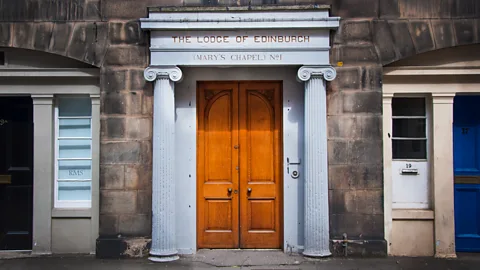 Amanda Ruggeri Amanda Ruggeri
Mary’s Chapel may only be open to fellow Freemasons, but its location is anything but a secret (Credit: Amanda Ruggeri)
Conspiracy theories abound about the Freemasons. But Scotland’s true Masonic history, while forgotten by many for centuries, remains hidden in plain sight.
With its cobblestone paving and Georgian façades, tranquil Hill Street is a haven in Edinburgh’s busy New Town. Compared to the Scottish capital’s looming castle or eerie closes, it doesn’t seem like a street with a secret.
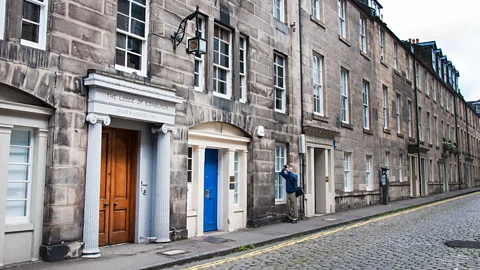 Amanda Ruggeri Amanda Ruggeri
Tranquil and historic, Edinburgh’s Hill Street attracts few tourists (Credit: Amanda Ruggeri)
Walk slowly, though, and you might notice something odd. Written in gold gilt above a door framed by two baby-blue columns are the words, “The Lodge of Edinburgh (Mary’s Chapel) No 1”. Further up the wall, carved into the sandstone, is a six-pointed star detailed with what seem – at least to non-initiates – like strange symbols and numbers.
Located at number 19 Hill Street, Mary’s Chapel isn’t a place of worship. It’s a Masonic lodge. And, with its records dating back to 1599, it’s the oldest proven Masonic lodge still in existence anywhere in the world.
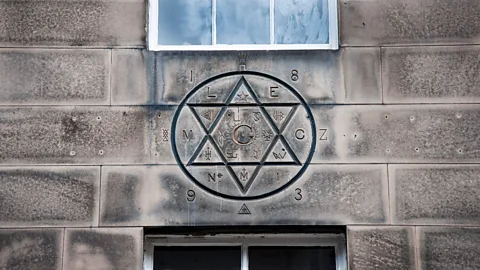 Amanda Ruggeri Amanda Ruggeri
At 19 Hill Street, look up to see this six-pointed star, a Masonic symbol (Credit: Amanda Ruggeri)
That might come as a surprise to some people. Ask most enthusiasts when modern Freemasonry began, and they’d point to a much later date: 1717, the year of the foundation of what would become known as the Grand Lodge of England. But in many ways, Freemasonry as we know it today is as Scottish as haggis or Harris tweed.
From the Middle Ages, associations of stonemasons existed in both England and Scotland. It was in Scotland, though, that the first evidence appears of associations – or lodges – being regularly used. By the late 1500s, there were at least 13 established lodges across Scotland, from Edinburgh to Perth. But it wasn’t until the turn of the 16th Century that those medieval guilds gained an institutional structure – the point which many consider to be the birth of modern Freemasonry.
Take, for example, the earliest meeting records, usually considered to be the best evidence of a lodge having any real organisation. The oldest minutes in the world, which date to January 1599, is from Lodge Aitchison’s Haven in East Lothian, Scotland, which closed in 1852. Just six months later, in July 1599, the lodge of Mary’s Chapel in Edinburgh started to keep minutes, too. As far as we can tell, there are no administrative records from England dating from this time.
“This is, really, when things begin,” said Robert Cooper, curator of the Grand Lodge of Scotland and author of the book Cracking the Freemason’s Code. “[Lodges] were a fixed feature of the country. And what is more, we now know it was a national network. So Edinburgh began it, if you like.”
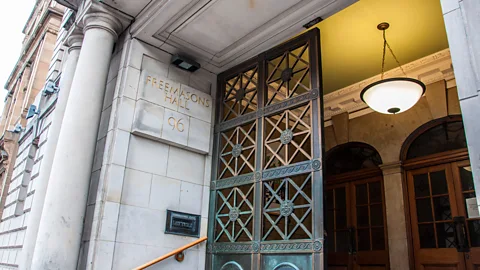 Amanda Ruggeri Amanda Ruggeri
The Grand Lodge of Scotland, also known as Freemasons Hall, stands in the heart of Edinburgh’s New Town (Credit: Amanda Ruggeri)
I met Cooper in his office: a wood-panelled, book-stuffed room in the Grand Lodge of Scotland at 96 George Street, Edinburgh – just around the corner from Mary’s Chapel. Here and there were cardboard boxes, the kind you’d use for a move, each heaped full with dusty books and records. Since its founding in 1736, this lodge has received the records and minutes of every other official Scottish Masonic lodge in existence. It is also meant to have received every record of membership, possibly upwards of four million names in total.
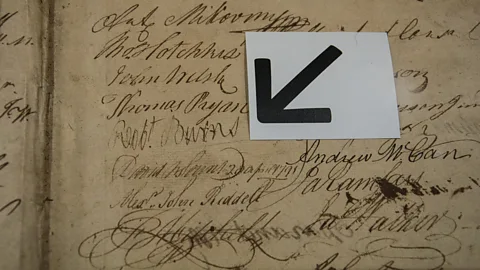 Amanda Ruggeri Amanda Ruggeri
One of the items on display at the Grand Lodge of Scotland’s museum is its membership record with the signature of famed Freemason Robert Burns (Credit: Amanda Ruggeri)
That makes the sheer number of documents to wade through daunting. But it’s also fruitful, like when the Grand Lodge got wind of the Aitchison’s Haven minutes, which were going for auction in London in the late 1970s. Another came more recently when Cooper found the 115-year-old membership roll book of a Scottish Masonic lodge in Nagasaki, Japan.
“There’s an old saying that wherever Scots went in numbers, the first thing they did was build a kirk [church], then they would build a bank, then they would build a pub. And the fourth thing was always a lodge,” Cooper said, chuckling.
 Amanda Ruggeri Amanda Ruggeri
The curator of the Grand Lodge of Scotland, Robert Cooper, looks over the lodge’s museum (Credit: Amanda Ruggeri)
That internationalism was on full display in the Grand Lodge of Scotland’s museum, which is open to the public. It was full of flotsam and jetsam from around the world: a green pennant embroidered with the “District Grand Lodge of Scottish Freemasonry in North China”; some 30 Masonic “jewels” – or, to non-Masons, medals – from Czechoslovakia alone.
Of course, conspiracy theorists find that kind of reach foreboding. Some say Freemasonry is a cult with links to the Illuminati. Others believe it to be a global network that’s had a secret hand in everything from the design of the US dollar bill to the French Revolution. Like most other historians, Cooper shakes his head at this.
“If we’re a secret society, how do you know about us?” he asked. “This is a public building; we’ve got a website, a Facebook page, Twitter. We even advertise things in the press. But we’re still a ‘secret society’ running the world! A real secret society is the Mafia, the Chinese triads. They are real secret societies. They don’t have a public library. They don’t have a museum you can wander into.”
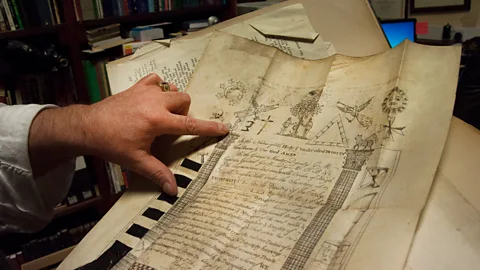 Amanda Ruggeri Amanda Ruggeri
Cooper points to the Masonic symbols on one of the many historic documents in the lodge’s archive (Credit: Amanda Ruggeri)
Some of the mythology about Freemasonry stems from the mystery of its early origins. One fantastical theory goes back to the Knights Templar; after being crushed by King Philip of France in 1307, the story goes, some fled to Argyll in western Scotland, and remade themselves as a new organisation called the Freemasons. (Find out more in our recent story about the Knights Templar).
Others – including Freemasons themselves – trace their lineage back to none other than King Solomon, whose temple, it’s said, was built with a secret knowledge that was transferred from one generation of stonemason to the next.
A more likely story is that Freemasonry’s early origins stem from medieval associations of tradesmen, similar to guilds. “All of these organisations were based on trades,” said Cooper. “At one time, it would have been, ‘Oh, you’re a Freemason – I’m a Free Gardener, he’s a Free Carpenter, he’s a Free Potter’.”
At one time, it would have been, ‘Oh, you’re a Freemason – I’m a Free Gardener, he’s a Free Carpenter, he’s a Free Potter’ – Robert Cooper
For all of the tradesmen, having some sort of organisation was a way not only to make contacts, but also to pass on tricks of the trade – and to keep outsiders out.
But there was a significant difference between the tradesmen. Those who fished or gardened, for example, would usually stay put, working in the same community day in, day out.
Not so with stonemasons. Particularly with the rush to build more and more massive, intricate churches throughout Britain in the Middle Ages, they would be called to specific – often huge – projects, often far from home. They might labour there for months, even years. Thrown into that kind of situation, where you depended on strangers to have the same skills and to get along, how could you be sure everyone knew the trade and could be trusted? By forming an organisation. How could you prove that you were a member of that organisation when you turned up? By creating a code known by insiders only – like a handshake.
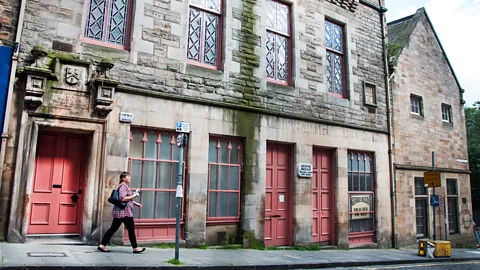 Amanda Ruggeri Amanda Ruggeri
Edinburgh's Lodge of Journeyman Masons No. 8 was founded in 1578; this lodge was built for it on Blackfriars Street in 1870 (Credit: Amanda Ruggeri)
Even if lodges existed earlier, though, the effort to organise the Freemason movement dates back to the late 1500s. A man named William Schaw was the Master of Works for King James VI of Scotland (later also James I of England), which meant he oversaw the construction and maintenance of the monarch’s castles, palaces and other properties. In other words, he oversaw Britain’s stonemasons. And, while they already had traditions, Schaw decided that they needed a more formalised structure – one with by-laws covering everything from how apprenticeships worked to the promise that they would “live charitably together as becomes sworn brethren”.
In 1598, he sent these statutes out to every Scottish lodge in existence. One of his rules? A notary be hired as each lodge’s clerk. Shortly after, lodges began to keep their first minutes.
“It’s because of William Schaw’s influence that things start to spread across the whole country. We can see connections between lodges in different parts of Scotland – talking to each other, communicating in different ways, travelling from one place to another,” Cooper said.
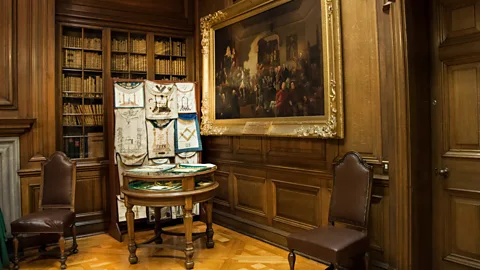 Amanda Ruggeri Amanda Ruggeri
This oil painting at the Grand Lodge of Scotland shows Robert Burns’ inauguration at Lodge Canongate Kilwinning No. 2, which was founded in 1677 (Credit: Amanda Ruggeri)
Scotland’s influence was soon overshadowed. With the founding of England’s Grand Lodge, the English edged out in front of the movement’s development. And in the centuries since, Freemasonry’s Scottish origins have been largely forgotten.
“The fact that England can claim the first move towards national organisation through grand lodges, and that this was copied subsequently by Ireland (c 1725) and Scotland (1736), has led to many English Masonic historians simply taking it for granted that Freemasonry originated in England, which it then gave to the rest of the world,” writes David Stevenson in his book The Origins of Freemasonry.
 Amanda Ruggeri Amanda Ruggeri
Hidden in plain sight on Brodie’s Close off of Edinburgh’s Royal Mile, the Celtic Lodge of Edinburgh and Leith No. 291 was founded in 1821 (Credit: Amanda Ruggeri)
Cooper agrees. “It is in some ways a bit bizarre when you think of the fact that we have written records, and therefore membership details, and all the plethora of stuff that goes with that, for almost 420 years of Scottish history,” he said. “For that to remain untouched as a source – a primary source – of history is really rather odd.”
One way in which most people associate Freemasonry and Scotland, meanwhile, is Rosslyn Chapel, the medieval church resplendent with carvings and sculptures that, in the wake of Dan Brown’s Da Vinci Code, many guides have explained as Masonic. But the building’s links to Masonry are tenuous. Even a chapel handbook published in 1774 makes no mention of any Masonic connections.
 Amanda Ruggeri Amanda Ruggeri
Mary’s Chapel may only be open to fellow Freemasons, but its location is anything but a secret (Credit: Amanda Ruggeri)
Scotland’s true Masonic history, it turns out, is more hidden than the church that Dan Brown made famous. It’s just hidden in plain sight: in the Grand Lodge and museum that opens its doors to visitors; in the archivist eager for more people to look at the organisation’s historical records; and in the lodges themselves, tucked into corners and alleyways throughout Edinburgh and Scotland’s other cities.
Their doors may often be closed to non-members, but their addresses, and existence, are anything but secret.
This story is a part of BBC Britain – a series focused on exploring this extraordinary island, one story at a time. Readers outside of the UK can see every BBC Britain story by heading to the Britain homepage; you also can see our latest stories by following us on Facebook and .
If you liked this story, sign up for the weekly bbc.com features newsletter, called “If You Only Read 6 Things This Week”. A handpicked selection of stories from BBC Future, Earth, Culture, Capital, Travel and Autos, delivered to your inbox every Friday.
https://www.bbc.com/travel/article/20161209-secret-history-of-the-freemasons-in-scotland |
|
|
|
|
-AA+A
1911–1915, John Russell Pope. 1733 16th St. NW
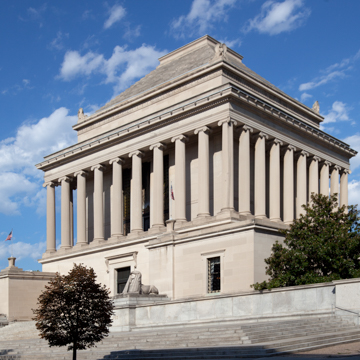
(Carol M. Highsmith Archive, Prints and Photographs Division, Library of Congress)

Scottish Rite Temple (Franz Jantzen)
☰ SEE METADATA
The mausoleum at Halikarnassos (353–c. 340 b.c.e.) was a model for many buildings in this period, including Masonic temples, because as one of the seven wonders of the ancient world it was associated with the beginnings of Western architectural traditions. The origins of freemasonry are linked to the lodges of medieval stonemasons and with a practice of architecture based on fundamental rules of the universe, with its most esoteric aspects expressed through a language of symbols. The definition of freemasonry as “a peculiar system of morality, veiled in allegory, and illustrated by symbols” explains why the buildings housing such organizations are themselves expressive of symbolic meaning.
Thrown down by an earthquake in the thirteenth century and quarried in the sixteenth century by the Knights of Saint John for the building of one of their castles, King Mausolos's tomb, a Hellenistic monument located on the Turkish coast, was the subject of numerous reconstructions by historians, archaeologists, and architects based on two ancient texts that describe its huge dimensions, colonnaded base, and stepped pyramidal top supporting a quadriga.
John Russell Pope's design, based on Newton and Pullman's 1862 restoration of the mausoleum, is centered on a nearly square site (217.5 by 212 feet) and raised above 16th Street on a podium with steps that extend the width of the block and that are organized according to arcane numerology. Three, five, seven, and nine steps converge on the central entry, which is guarded by Sphinxes, sculpted by Adolph A. Weinman, representing wisdom and power, contemplation and action. Thirty-six Ionic columns 33 feet high circumscribe the temple room, where the highest degree of freemasonry (the thirty-third) is conferred. The attic, marked by acroteria and the stepped pyramid, covers a square Guastavino dome; thus, the basic form above the base encloses a single volume. The compact base, with its expanses of smooth walls broken only by windows and doors, the peripteral colonnade set against nearly solid walls, and the faceted surfaces of the roof demonstrate Pope's unerring sense of balanced proportional relationships between masses and details. The light, monochromatic Indiana limestone is particularly well suited to the combination of planar surfaces and finely carved Greek and Egyptian details. Although Pope, with the advice of local architect and mason Elliott Woods, was responsible for incorporating some basic symbolism, the inscriptions and symbolic decorative details were planned by the grand commander of the lodge, George Fleming Moore, after the architectural design was completed.
The ground story is represented by the monolithic base on the exterior; on the interior an apsed atrium is ringed by offices, meeting rooms, banquet hall, and libraries. The atrium's form and decoration were intended as symbolic imitation of a Roman impluvium. Two sets of four massive Doric columns in a highly polished green Windsor, Vermont, granite establish a pathway leading to the apse on the east, where the main stair rises to the temple room. The oak-beam ceiling is painted in deep shades of red, brown, blue, yellow, and green, as are the walls in recesses behind the column screens. The decorative vocabulary mixes Greek frieze motifs and Egyptian hieroglyphics. The variation of rich and beautifully crafted materials continues in the main space. The temple room, a square with beveled corners that continue up into the dome, is constructed of limestone walls, Botticino marble dado, black and white marble floors, and a Guastavino tile dome. Windows are screened by Ionic columns set in antis made of green Windsor, Vermont, granite. Their gilded bronze capitals and bases echo the lavish use of gold or bronze in the entablature, windows, screens, and doors. The vault nearly doubles the height of the room, a proportional relationship that complements the subdued richness of the architectural surface. American architectural critic Aymar Embury so admired Pope's Scottish Rite Temple that he maintained, “Roman architects of two thousand years ago would prefer [it] to any of their own work.” 43
https://sah-archipedia.org/buildings/DC-01-MH12 |
|
|
|
|
Madeleine de France, Queen of Scotland, 1536
(Madeleine de France (1520-37) Queen of Scotland, 1536 )
|
https://www.meisterdrucke.us/fine-art-prints/Corneille-de-Lyon/80721/Madeleine-de-France,-Queen-of-Scotland,-1536.html
|
|
|
 Primer Primer
 Anterior
62 a 76 de 76
Siguiente Anterior
62 a 76 de 76
Siguiente
 Último
Último

|

 This encounter with destiny, was to leave an everlasting impression on William Sinclair. Sir William, the chapel builder, is also the direct ancestor of the First Grand Master Mason of Scotland, also named William St Clair (Sinclair) who had a exulting sense of pride when he inherited the title. An akashic oracular time machine centred on the Sun and the Moon would be built to house the ancient library of knowledge. A modern day Solomon's Temple (itself an anagram of Sol-Sun & Mon-Moon). The source of Modern Freemasonry was to leave some figurative allegories to symbolise deeper moral truths, or spiritual meanings. Bloodlines and the inseparable D.N.A. coil symbol that today is considered conventional to portray the blood-group message, was ascribed by Sir William to pay attention in chapter 13 verse 13 to the knowledge and secrets of the 13th disciple.... Matthew's words,......
This encounter with destiny, was to leave an everlasting impression on William Sinclair. Sir William, the chapel builder, is also the direct ancestor of the First Grand Master Mason of Scotland, also named William St Clair (Sinclair) who had a exulting sense of pride when he inherited the title. An akashic oracular time machine centred on the Sun and the Moon would be built to house the ancient library of knowledge. A modern day Solomon's Temple (itself an anagram of Sol-Sun & Mon-Moon). The source of Modern Freemasonry was to leave some figurative allegories to symbolise deeper moral truths, or spiritual meanings. Bloodlines and the inseparable D.N.A. coil symbol that today is considered conventional to portray the blood-group message, was ascribed by Sir William to pay attention in chapter 13 verse 13 to the knowledge and secrets of the 13th disciple.... Matthew's words,......















